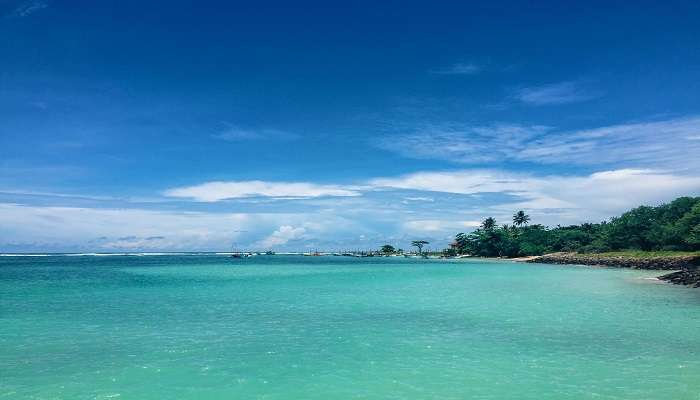Everything You Need To Know About Stilt Fishermen Sri Lanka To Explore Its Serenity In 2026

Sri Lanka is one of the few island nations that is renowned for its cultural heritage, diverse ecosystems and rich history. Among the many historical and innate traditions in the country, one that’s still raved about is Stilt fishing. It is a traditional method of fishing that primarily involves the fishermen perched on top of a crossbar to catch fish from the seas and oceans. More than art, this stands out as a form of livelihood for the local people. If you are curious to learn more about Stilt Fishermen Sri Lanka, visit one of the many places where this traditional fishing method is practised.
About Stilt Fishermen Sri Lanka

Stilt fishing is a traditional fishing technique that’s predominantly practised across the south Sri Lankan coast. In this, the fishermen sit on top of a crossbar, more commonly known as “petta”, which connects to a vertical pole and is drilled into the sand a few metres off the coast to ensure stability. The elevation on top of the petta provides the fishermen with an upper hand in casting their lines into the shallow waters without disturbing the fish. This kind of fishing technique is perfect for catching small reef fish species like spotted herrings and mackerels.
Beyond the traditions associated with this fishing technique, it also showcases the deep connection between the people and the sea. Since the fishermen are perched on top of a crossbar, stilt fishing requires a lot of skill and balance. Also, they remain seated on top of the crossbar for hours.
The sight of these fishermen silhouetted against the horizon at sunrise or sunset has become an iconic image of Sri Lanka, attracting tourists and photographers worldwide.
Must Read: Dondra Head Lighthouse
History Of Stilt Fishermen Sri Lanka

While the exact history behind stilt fishermen isn’t known, some reports depict that it dates back to the World War II era. Legends depict that the local communities, during the time of war, faced a scarcity of resources, which pushed them to find new methods of catching fish.
So, the idea of stilt fishing came into being during that time out of necessity. The objective was to indulge in fishing in the local areas where the fish were fairly abundant. Back in the day, the stilts were constructed out of hardwood and bamboo to ensure optimal sustainability.
Since then, there have been no changes in the use of the materials. It has now become the adopted route of fishing across the southern coast of Sri Lanka. This cultural tradition has now been passed on through generations. This tradition has endured despite the advent of modern fishing technologies and remains a popular fishing technique being used across the island nation.
Process Of Stilt Fishing Sri Lanka
Understanding the actual procedure is crucial when exploring the Stilt fishing technique across Sri Lanka. It is a physically demanding activity that requires patience, balance and skill. Here’s a breakdown of the steps:
1. Construction Of The Stilts

The first step is to find sturdy and water-resistant materials like hardwood and bamboo, which are used for making stilts. The structure starts with building the vertical pole into the seabed to create the crossbar. To ensure stability, the pole is dug deeper into the sand where the water reaches the fishermen’s waist. Alongside the vertical pole, the crossbar is attached. Since the fishermen are responsible for the entire process, the stilts are placed in areas of high fish activity.
Suggested Read: Crow Island
2. Preparation For Fishing

Stilt fishing uses traditional fishing rods, bait and lines. To ensure better stability and balance, the roads that are used for fishing are lightweight. The activity itself is usually done during the dusk or dawn period when the fish’s activity is the highest.
3. Fishing Technique

Fishermen wade through the water to reach their stilts and carefully climb onto the crossbar. Despite the waves, the key is to remain steady and balanced. Once the fishermen settle on top of the pole, the next crucial step is to cast the line into the water. The main objective behind the elevated position is to be able to fish without casting shadows or making noise. Once the net is spread into the nearby water body, next comes patience and waiting.
Once done, the fishermen collect their day’s catch and return to their homes. It is an act of labour and love and contributes to their livelihood significantly.
Suggested Read: Kallady Bridge
Best Time To Visit Stilt Fishing Sri Lanka

If you want to witness stilt fishing in real-time in Sri Lanka, the key is to know when to visit. Asking the locals about stilt fishing in Sri Lanka and the best time to visit will unveil that the months from November to April are considered the ideal time.
During these months, the seas are calmer, making it suitable for the fishermen to spot and catch the fish without any hassle. The monsoon season from May to October is usually the period when the fishermen avoid exploring the seas and trying fishing since the waves are turbulent and unsafe to fish.
Places Where Stilt Fishing Sri Lanka Is Done
Stilt fishing is a leading activity that’s conducted by local fishermen across the south of Sri Lanka. The traditional fishing method is kept alive by small coastal communities that have been doing it for generations. Some of the places where you will get to witness this activity include:
1. Koggala

Koggala is located in the historical city of Galle and is considered one of the hotspots for witnessing the stilt fishermen in action along the coastline. This is a small coastal town and is known for its secluded beaches and the traditional fishing practices that are conducted along the coast. When you are in the town, visit the viewpoint or the area of the new Koggala River to witness the fishermen in action. To witness the entire process of stilt fishing in Koggala, visit the beaches during early morning or late afternoon.
Suggested Read: Ahangama Beach
2. Ahangama

Another town in Sri Lanka where stilt fishing is raved and quite frequently done near the fishing villages is Ahangama. It is located a few kilometres from Koggala, so you can explore both spots at different times of the day. This coastal village is famous for its clear waters and abundant marine life, making it an ideal spot for stilt fishing. What’s impressive is that the remote location means that there aren’t many tourists crowding the areas, enabling you to click photographs and even interact with the fishermen in action.
3. Kathaluwa

Kathaluwa is another popular coastal village that is located near Koggala. Beyond the traditional fishing practices, the beach is also known for its tranquil beaches. Visiting the beaches in this coastal town allows you to have a more intimate experience exploring the beaches in a less commercialised setting. Despite its offbeat location, Kathaluwa is easily accessible with local transportation, so you wouldn’t have to worry about the commute.
Suggested Read: Trincomalee Beach
4. Weligama

A fairly underrated spot in Sri Lanka where stilt fishing is performed is Weligama. It is a pronounced town on the southern coast of Sri Lanka and is primarily known for its vibrant fishing community. With golden sandy beaches, it offers a unique cultural attraction for tourists. In Weligama, the tradition of stilt fishing coexists with modern development. The local fishing community continues to practise stilt fishing, often incorporating it into tourism activities.
5. Mirissa

Once you are done exploring the stilt fishing experience at Weligama, make your way to Mirissa, which is located nearby. It is another notable spot where you get to witness traditional stilt fishing. The town’s appeal lies in its natural beauty and the stunning beaches that surround the place. The fishermen of Mirissa, like those in other coastal villages, continue to uphold their traditional practices. The integration of stilt fishing into the tourism industry has provided a supplementary source of income, helping to preserve the practice.
Further Read: Parrot Rock
Stilt fishermen of Sri Lanka are still upholding the traditions that date back to decades in the past. If you are new to exploring this art and how it works, the best way to know is by interacting with the local communities. The people are welcoming and extremely proud of their traditional way of life. Getting to witness the local fishermen in action and capturing those moments on your next trip to Sri Lanka is an experience like no other.
For our editorial codes of conduct and copyright disclaimer, please click here.
Cover Image Credit: Trip Travel Sri Lanka on Facebook
Frequently Asked Questions About Stilt Fishermen Sri Lanka
Where can I see stilt fishermen in Sri Lanka?
Stilt fishermen can be observed along the southern coast of Sri Lanka, particularly in areas like Koggala, Ahangama, Kathaluwa, and Weligama.
What kind of fish do stilt fishermen catch?
Stilt fishermen primarily catch small reef fish such as spotted herrings and mackerels.
Is stilt fishing still practised today?
Yes, stilt fishing is still practised today, although it has become more challenging due to environmental changes and the advent of modern fishing techniques.
Can tourists try stilt fishing?
While tourists can observe stilt fishing, trying it themselves is generally not recommended due to the skill and balance required.
How long do stilt fishermen stay on their stilts?
Stilt fishermen usually spend several hours on their stilts, particularly during dawn and dusk when fish are most active.
People Also Read:
Anuradhapura Ruins Ranmasu Uyana Isurumuniya Temple

With a passion for exploring and travelling to the roads long forgotten, experience the world through enthralling stories and adventures. Join me as I share my experiences at some of the world’s most popular tourist destinations and quench that pestering curiosity with something exciting!











